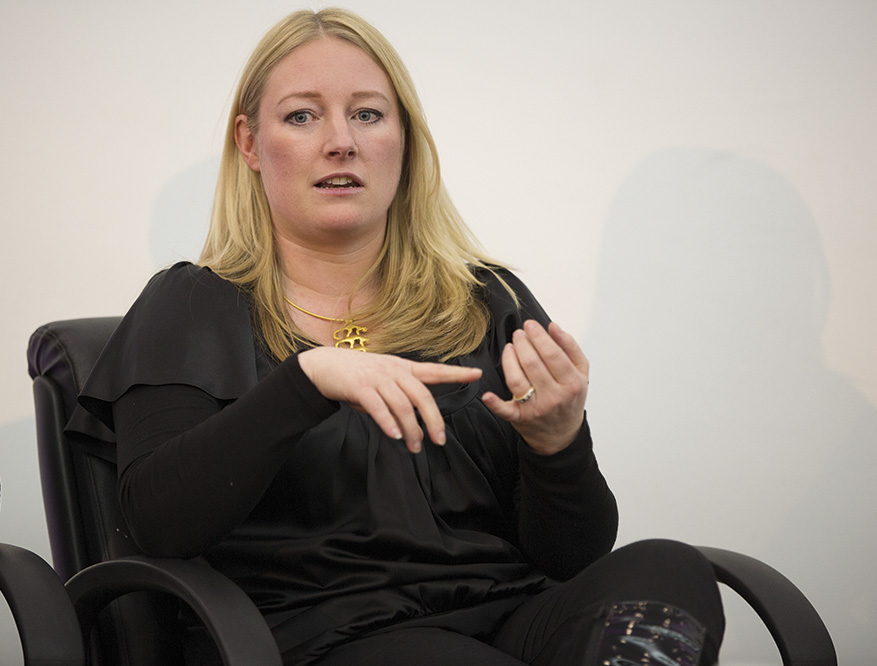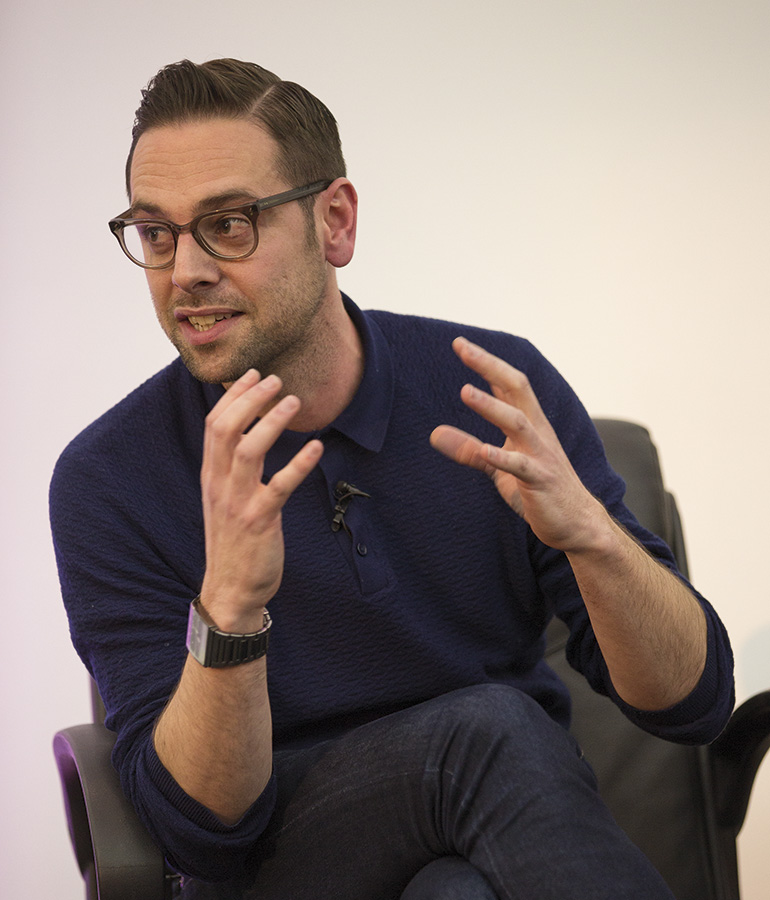Factual TV has been transformed by fixed-rig docs such as Educating Yorkshire and 24 Hours in A&E. Matthew Bell hears how they are made.
Channel 4's top fixed-rig series – One Born Every Minute, 24 Hours in A&E and Educating Yorkshire – have won a clutch of RTS awards and Baftas, and have proved enduringly popular with viewers over the past few years.
At the first RTS early-evening event of the year, an audience of close to 200 braved the bitter January cold to hear a panel of experts, interviewed by former BBC One Controller and TalkbackThames boss Lorraine Heggessey, explain how they make these shows.
Fixed-rig productions have radically changed the way that film-makers work, giving them many more tools to work with. While old-school observational documentary directors have to make do with a couple of cameras to shoot their series, fixed-rig shows have up to 100, as they take viewers inside every nook and cranny of schools, hospitals and police stations.
"As a film-maker, it's the most incredibly exciting place to be – you're completely liberated in terms of the stories you can tell," said David Brindley, who made Educating Yorkshire, whose consolidated ratings frequently topped 4 million. As Channel 4 Commissioning Editor, Documentaries, he is now responsible for the broadcaster's fixed-rig shows.
Despite turning the school of Educating Yorkshire or the cop shop of 24 Hours in Police Custody into one large film set, fixed-rig technology allows people to be filmed intimately.
The subjects know where the cameras are. They know they are being filmed. But, without the presence of a crew, which they may find inhibiting or even intimidating, they tend to act more naturally.
Documentary subjects act less self-consciously, argued Sarah Swingler. She is Head of Dragonfly West and the Executive Producer of One Born Every Minute, which has aired on Channel 4 since 2010.

"They behave differently to how they would if the crew were in the room with them," she said.
"There's a different tone to a rig show," agreed Brindley. "It's about as purely observed as you can get – there's a real honesty to the scenes."
Armed with more cameras, the gallery director can concentrate on the reactions of the other people in a room. "We're constantly looking for reaction shots, which often say a lot more than the person speaking," said Brindley. "Traditionally, with single-camera [shoots], you're very worried about making sure you're [focusing] on the person speaking. Here, you've got the luxury of being on two or three other people, who are reacting to things."
Making a fixed-rig series is a huge undertaking. Up to 100 cameras have to be installed and connected, via cabling, to the gallery.
"On 24 Hours in A&E we used nearly 18km of cable to fit 92 working cameras," recalled Adam Berger, General Manager of outside broadcast outfit CTV.
"It can take up to two weeks to get the cable into a hospital because, if somebody's in resuscitation or a woman is giving birth in a delivery suite, we have to wait.
"We're taking outside-broadcast technology and embedding it into a hospital or hotel," he explained.
Instead of the high-tech OB trucks used to broadcast from sporting events, a fixed-rig show is usually run from a single Portakabin. Once the equipment is installed, the production requires only a small technical presence to run.
"When we're up and running, there's only a technical crew of four people – a camera operator, sound mixer, a vision engineer and a technical assistant – operating a 50-camera system with 20 radio mics and another 50 or 60 effects mics. If we were doing a golf event, we would have a crew of 100," said Berger.
Video is recorded from just three of the many robotic cameras at any one time, chosen by the gallery director. When the cameras pick up an interesting conversation or incident, the director has to make a call on whether to follow the story.
Using streams from just three cameras on One Born Every Minute produces 6,000 hours of raw material from which to make a series. "To have more would be prohibitive – we're directing, not just hoovering up images," said Swingler.
"The skill is in using the rig to its full potential," said Brindley. "A common misconception about directing in a rig is that you walk in, press record and sit back. That's not the case at all.
"You need to work the gallery and the technology. You've got to make sure that you're getting strong content. Like any other observational film-making, content is king – it's all about delivering good stories and characters.
A common misconception about directing in a rig is that you walk in, press record and sit back
"No matter how many millions of pounds of kit or how many cameras you've got, if you're not doing that, you're not going to get a strong series," emphasised Brindley. "Even with all this technology, you can still direct [a programme] badly."
Thorough preparation is important, but reacting to events equally so. "With Yorkshire, we were in the school for nearly a year before we pressed record – finding out about the children, the school, the staff and the narratives to follow," recalled Brindley.
"Half of those probably played out and made it to screen in some shape or form, but the other half – and this is what the rig allows you to do brilliantly – [we got from] following something spontaneously that we could never have predicted would happen."
Fixed rigs have also changed the scale and nature of post-production. "There's a lot of media. One hundred hours was very typical for a documentary. Now, there's day after day of media, and 50 tracks of audio with every hour of vision," said Owen Tyler, Operations Director at post-production company Evolutions.
"Traditionally, people would come to us with tapes – [for One Born Every Minute] that meant 6,000 hours of material, which we would have had to ingest at a massive cost.
"We now go to the location and capture it straight on to our servers," he continued. "We're working more closely with the production, which is fundamentally different for us."
Having filmed inside many of the UK's leading institutions, Channel 4 is now taking fixed-rig technology to Africa in The Tribe, which is due to air later this year.
"We're trying to recreate the idea of the first series of The Family with a tribe in Ethiopia," said Brindley. "It doesn't have that sense of a big white film-maker following their every move. What we did was put cameras in their homestead for four weeks and let them get on with life."
'Fixed-rig documentary: the story behind the lens' was an RTS early-evening event held at the Cavendish Conference Centre in central London on 20 January. The producers were Lucinda Hicks and Terry Marsh.
Consent flows from trust
Seeking consent to film One Born Every Minute is 'the most tricky consent process I've had to deal with', said Executive Producer Sarah Swingler. It requires both hospital staff and expectant mothers to give their consent to be filmed. Sarah Swingler
Sarah Swingler
'We have a double consent process. [Initially,] a mum and her family would only be asked to consent to an interview that we film before she has her baby,' explained Swingler. 'She doesn't sign a release form at that point so, for us, it's a leap of faith.'
'When she comes to the hospital, we hope that she hasn't lost her nerve and that we can then film her having her baby. Only once the baby has been delivered and is fit and well does she sign a release form.'
Discussing the difficulty of gaining the consent of NHS employees, Swingler said that managers are usually concerned that the hospital's reputation is not tarnished.
Midwives' consent is typically given on a 'sliding scale', she explained. 'We might get to the point where they're prepared to be filmed in the background and that's it, or they may say, "You can film my hands while I do an epidural."
'You just hope that, by building up a strong relationship through the filming process, you'll get to the point where they'll let you film them delivering babies and then, ultimately, be interviewed about it. It's a long process.'
For Educating Yorkshire, Director David Brindley had to gain the consent of around 750 staff and pupils. The secret was 'building trust and relationships' over time, so the production team began to seek the consent of participants six months before shooting started.
'We had an "opt-out" consent process within the school,' Brindley explained. Unless their parents stated that they did not want their child to be featured, they could appear in shot.
For the principal characters, such as Musharaf, the student who defeats his stammer in the moving series finale, there was a secondary consent process, which goes on beyond the end of the shoot.
'We told them the things we were filming; we interviewed them at the same time, so they got a good steer about [what] we were interested in. We [involved them] through the edit. Then, with viewings, we showed the films to each of the children and their parents or guardians, as well as the Head Teacher and senior staff,' said Brindley.
Few subjects withdrew their consent, which Brindley attributed to the efforts of the production team to build trust over many months.
His general experience is that 'there isn't much dropout. Only a huge change of heart or a legal issue means that we lose a story.'
Magic moments would be lost without an index
 David Brindley
David Brindley
Editing fixed-rig footage into a coherent series, with the best characters and stories to the fore, is like completing a jigsaw puzzle from hundreds of thousands of pieces. It is a Herculean task, but one that is made possible by the systematic logging of all the material, as it is shot, in the gallery.
When the material is logged, editors can then search for particular sequences using key words such as characters' names.
'You're nothing, if you've lost your brilliant moments from your thousands of hours of [footage],' admitted Channel 4's David Brindley.
Recalling the logging process from Educating Yorkshire, which he directed, Brindley said: 'We had two people at any one time who were transcribing exactly what was said on the three [camera] streams.'
Hot keys for characters' names were used to enable the typists to keep up with the conversations they were hearing. 'We also had a line of keys, which said things like, "Brilliant moment", "Funny" or "Sad",' explained Brindley.
At the same time, an assistant producer in the gallery wrote an editorial log on the day's highlights. 'That was our first point of reference to find key scenes when we were in the edit. Finally, my co-director and I had laptops and, if there was anything that we felt we didn't want to lose, that would also go in a log.'







